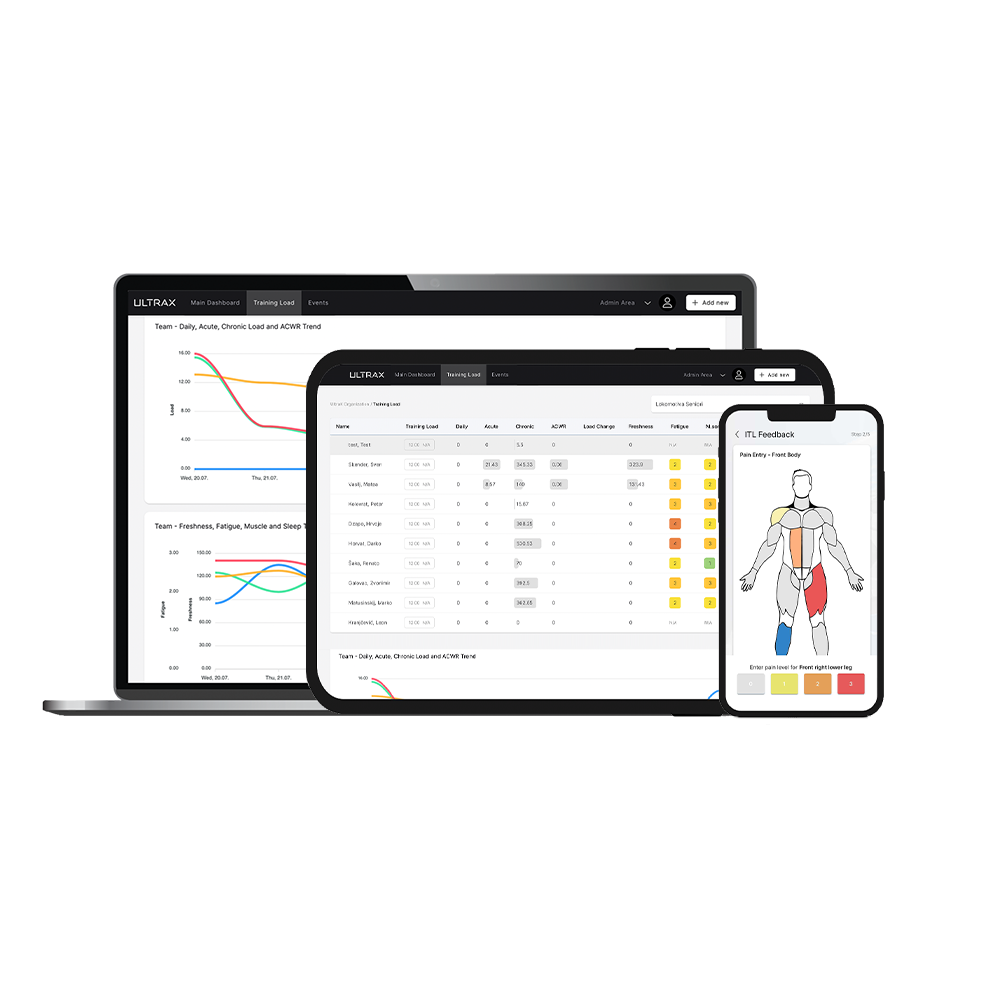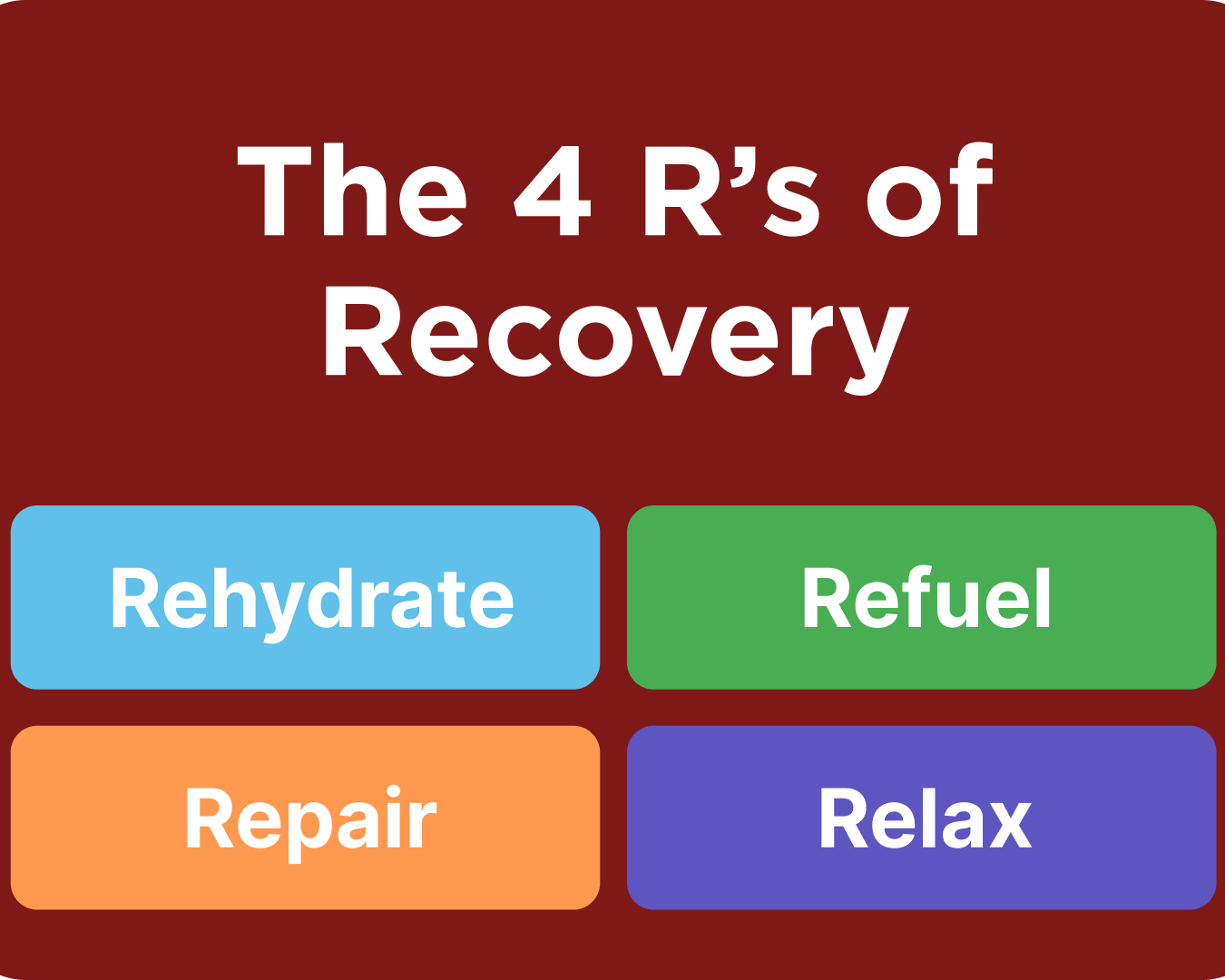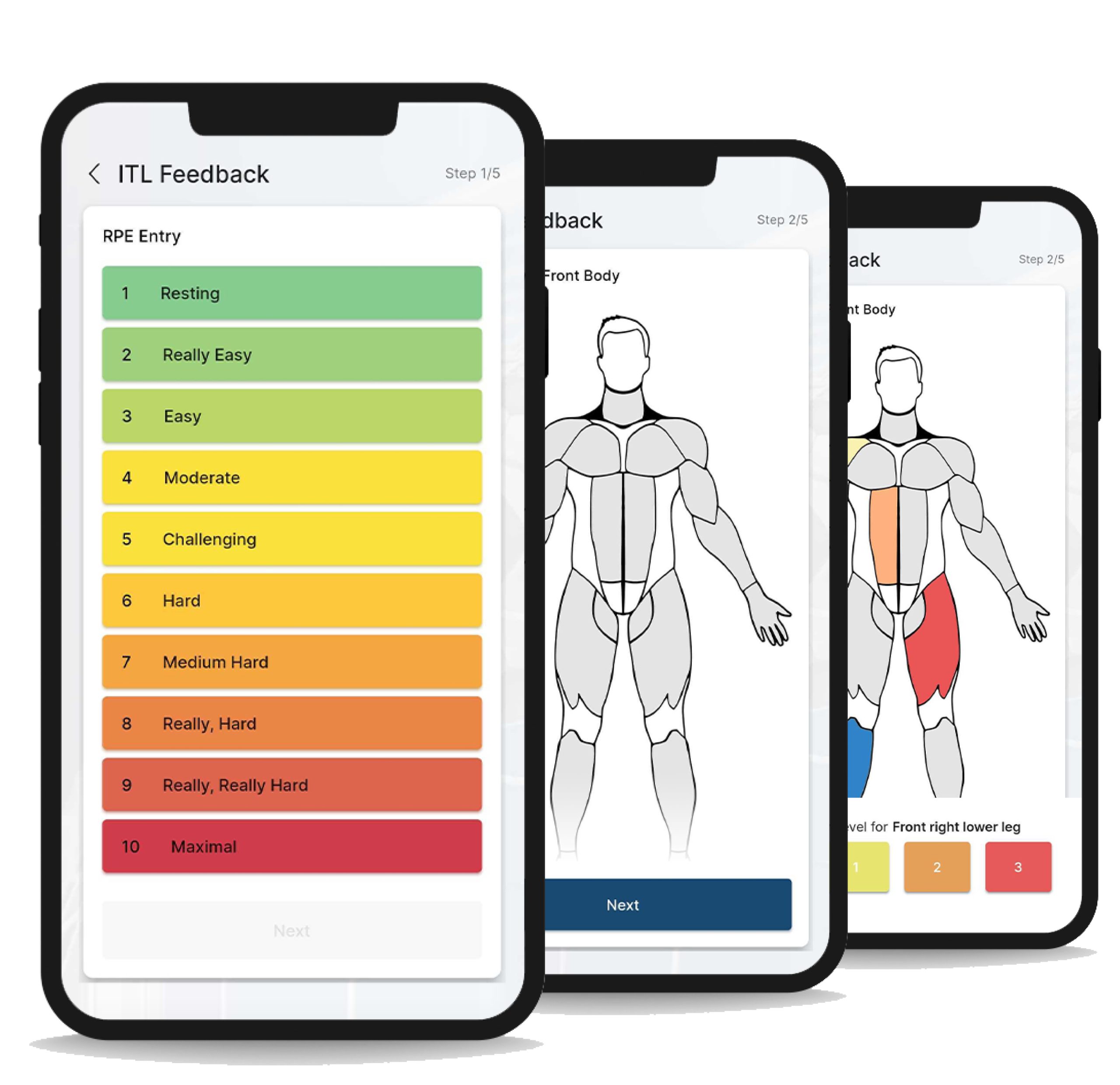A practical guide for internal load management and injury prevention solution in sport explained through the functionalities of the Ultrax app
Introduction
The football of 2030 will not be the same as the football of 2020. In recent years, the game has changed. The number and the intensity of football actions have evolved. We can see that modern teams tend to have more counterattacks, and greater exposure to intense, short accelerations and decelerations, interspersed with high-intensity movements. What we can also see is that the number of muscle injuries, to be more exact, hamstring injuries has increased by 4% annually. Sports injuries are becoming a problem not just in football but in many sports. Having an injured athlete requires more time, money, and energy for the most important stakeholders, not to forget athlete away time from practices and matches. The cause of injury and overtraining or undertraining is multifactorial, but in recent research, there have been some mentioning that poor load management can be one of the causes of potential injury, especially when it comes to young developing athletes.
For this reason, we have prepared a document to explain the most important principles of internal load based on RPE (rate of perceived exertion) monitoring its understating, implication, and visualization with ULTRAX performance platform. As coaches, you have probably come across a large number of excel files, spreadsheets and word documents that are saved somewhere on your personal computer. Ultrax performance platform is an athlete and sport management software that simply collects data about your athletes in one place. It enables you to collect data in the form of internal and external workload of your team or individual athletes, create events such as training, matches and enter diagnostic test results from your team. In addition to data collection, the application does processing, interpretation and visualization for you and your team.

Basic Concepts
Load represents the combination of sports and non-sports stressors. This means that an athlete can be impacted not just by sport load connected with the training sessions and matches, but also load can involve family obligations, lack of sleep, nutritional habits, and state of the mind on that day or previous days. We can divide the load into two subcategories, external load, and internal load. In this document, we will be speaking more about internal load factors and variables affecting it such as after training RPE feedback and everyday wellness questionnaires.
Internal Load
Internal load represents the psychological and physiological response from the athlete to the given load we put on them. For example, if we have planned a training session that consists of a warm-up drill, some passing exercises in the duration of 2x6min, some basic game 2x7min, and a game 2x8minutes. The duration and GPS (external load such as total distance covered, distance covered in high intensity zones) values after the session represent the load that we have put on the athlete and the team. Internal load represents the reaction of the athlete to the given load, measured in heart rate, or biochemical response.
The internal load can help us to detect adaptations to the given external load, manage our recovery, load days, and anticipate health issues. Also, it can help us in reducing the monotony of training weeks or training days.
Rate of Perceived Exertion
A validated, effective, and simple method has been proposed by the sports scientist dr. Carl Foster. This requires the athlete to rate the difficulty of the training session on a scale from 0 to 10. When we add the total duration of the training and the rating that the player or the team gave us after that training, we will get the so-called load expressed in arbitrary units (Load = training duration x RPE).

Training load – represents the training load from one training session in the part of the day (Training session 1 (TS1) = duration x RPE
Daily training load – represents the sum or the average of all training sessions in one day for one team or one player (TS1 LOAD + TS2 LOAD + TS3 LOAD = DAILY LOAD)
Weekly training load – represents the total weekly load or average weekly load for one team or one player (Day1+day2+day3+day4 = weekly load – game and session load all together)
Monotony – standard deviation of weekly training load
Strain – daily or weekly training load X monotony
Training load based on RPE
On the main ULTRAX dashboard you can find information such as player name, position and status, team daily load, chronic load, and acute to chronic ratio (ACWR), 3-day load trends in a graph and player wellness that consists of mood, fatigue, muscle soreness, and sleep quality.
As mentioned, injury reduction is possible, but injury prediction is a lottery. But we can still use the best practice and variables mentioned above to help us guide the training process and monitor player health status.

Player status represents the state of the athlete. Athletes can be categorized as injured, inactive, suspended, sick, and healthy. For sporting personnel, it is important to track the state of the athlete to understand the training and load circulation. If an athlete is injured, he will miss some training sessions. The load for him will be different than the load for the rest of the team. We need to track what happens to know the answer to the question – why it has happened?
Acute load represents the accumulated load of the given week. The higher the acute load (compared to the previous week or weeks) the athlete is more “tired” or not fresh. This is because acute load represents a fatigued state or the current load that is put on the athlete.
Chronic load represents the accumulated load from the previous 21 or 28 days. In the ULTRAX structure we use 28 days for chronic load calculation. As opposed to acute load, chronic load is a measure of the “fitness” of the athlete. With this variable, we can see how much load we have put on the athlete in the previous weeks. This way we can decide if we want to go into lowering or increasing of the load. For chronic load calculation, we use the average of the previous four weeks.

Acute to chronic workload ratio is the ratio of load state from the past 7 days, divided by the chronic load from the past 28 days (about 4 weeks).
Sweet spot zone
Next what we need to do is to give this number a meaning. In the paper: ”the training injury prevention paradox” written by author Tim Gabbet, the author recommends a so-called “sweet spot” zone.

The green-shaded area (‘sweet spot’) represents acute/chronic workload ratios where injury risk is low. The red-shaded area (‘danger zone’) represents acute/chronic workload ratios where injury risk is high.
To minimize injury risk, practitioners should aim to maintain the acute: chronic workload ratio within a range of approximately 0.8–1.3.
Load Management

Training monotony refers to load fluctuations. High training monotony and high training intensity can lead to illness or overtraining of the athlete. In general, low monotony (a value below 1,5) is preferable so that different training adaptations can occur, while allowing sufficient recovery to the body. Low monotony is normally associated with polarized training and periodization methods alternating high and low load period. Also, high monotony values (for example above 2) indicate that the training program might be ineffective and lead to stagnation, or lack of improvement.
Training strain is calculated by multiplying the total training load for the training week, by the training monotony. It measures the overall stress the individual was exposed to throughout the training week – the accumulation of how hard they worked.
“The excessive training strain is a result of high training monotony values which can indicate a higher risk of overtraining, illness, or injury when combined with high weekly training loads. This type of training has been associated with incidence of illness and poor performance.”
Low to moderate training strain, up to 50% greater than the weekly training load is preferable. This indicates two things. Firstly, that the training loads are varied enough to trigger adaptations. Secondly, that the rest periods are sufficient to promote recovery between sessions.
Training freshness index represents the difference between chronic and acute load or difference between fitness and fatigue. A positive freshness index indicates an unloading phase where low fatigue and good performance levels are to be expected.
Week to week change represents the percentage of load increase or decrease from one week to the next. It is a major injury risk factor as previous studies have shown that a large percentage of muscle injuries are associated with rapid change or spike in weekly training loads. When load increase is larger than 15% (picture 4) from the previous week, the risk of injury goes up by almost 50%. Monitoring week to week change represents an important variable in guiding the training process.
Practical use
Studying literature, there are few examples and little evidence that indicate that with the use of just one variable or by using the sweet spot you can predict injury occurrence. But what you can do with it is you can control and direct your training process. When working with large groups of athletes you want to have an individualized approach. You can have the same session or drill for your team with the same parameters, but you will get a different response from your athletes. That is why it is important to individualize the training process. What authors also have concluded is that rapid spikes in load can cause injuries. The authors recommend that week by week change should be somewhere between 10 to 15% in both directions. There are several studies made on soccer and rugby players where a rapid increase in high-speed running has caused injuries. Yes, you can plan higher spikes in load, but you need to be aware of the repercussions.

Unpublished data collected from professional rugby league players over three preseason preparation periods. Training loads were measured using the session-rating of perceived exertion method. Training loads were progressively increased in the general preparatory phase of the preseason (Ie, November through January) and then reduced during the specific preparatory phase of the preseason (Ie, February). The training programmed progressed from higher volume-lower intensity activities in the general preparatory phase to lower volume-higher intensity activities in the specific preparatory phase. Each player participated in up to five organized field training sessions and four gymnasium-based strength and power sessions per week. Over the three preseasons, 148 injuries were sustained. Data are reported as likelihoods ±95% CIs.
“Foster has recommended that alternating hard and easy training days reduces training monotony, and strain and this balanced approach to load management may help reduce incidences of illness and overtraining.”
Wellness Questionnaire
Asking athletes to fulfill a self-reported questionnaire is a reliable and accurate method to check athletes’ response to training, his readiness to train and to measure the impact of non-sports stressors on his recovery process.

For this reason, Ultrax system uses an athlete self-reported measure questionnaire that consists of 5 questions, fatigue, sleep quality, general muscle soreness, stress levels and mood. We also incorporate the duration of sleep as there are studies that insufficient hours of sleep can reduce readiness to train and performance on training sessions and games.

Player readiness/wellness is the representation of the total score of wellness questionnaire presented in percentage value. The maximal value that athlete can have in wellness self-reported questionnaire is 25 what represents 100 percent of athlete readiness. Everything less than 25 will be presented in different percentages.

Pain scale depicts a representation of the human body on which the athlete can mark parts of the body that are painful or problematic before or after training. The athlete can mark the anterior and posterior views of the muscle structures and joint structures that can be painful. They can mark them on a scale of pain intensity from 1 to 3. This information can give coaches an insight into the reactions on their training sessions. In the same way, we can monitor short-term reactions or chronic reactions of players that can affect the preparation before training or recovery protocols after training.

Scientific research
Thorpe et al. (2016) found that internal training load (session-RPE) was significantly higher on match day, which coincided with 35-40% worse ratings of self-reported fatigue, sleep quality and DOMS on the post-match morning, compared with pre-match morning, in English Premier League soccer players. Internal training load (session-RPE) progressively decreased over the 3 days leading up to match day, and these reductions in training load were mirrored by improvements in perceived wellness.
Hogarth et al. (2015) reported that perceived well-being peaked one hour before the first match and then progressively declined after each subsequent match during a 3-match tournament, in national tag football players.
According to an experiment by Flatt et al. (2017), Division 1 collegiate swimmers noted increased perceived fatigue and soreness in response to a training period meant to overload the body. After a lower intensity tapering period that followed, perceived fatigue and soreness decreased back to baseline.
Similarly, Buchheit et al. (2013) found a relationship between training load and perceived wellness outcomes during an intensified period of training (a two-week training camp) in a professional an Australian Rules Football squad. The athletes reported reduced levels of perceived wellness on mornings following days that had higher daily training loads.
Clemente et al. (2018) recently observed associations between perceived well-being parameters and weekly training loads in 13 elite volleyball players during a full competitive season (nine months, 237 training sessions and 37 official matches). The authors found moderate-to-large correlations between perceived weekly training load (session-RPE) and perceived status of muscle soreness, fatigue and stress. Higher weekly training load was associated with increased muscle soreness, fatigue, and stress.
References
- Foster, C, Hector, LL, Welsh, R, Schrager, M, Green, MA, and Snyder, AC. 350 Effects of specific versus cross-training on running performance. Eur. J. Appl. 351 Physiol. 70(4): 367-372, 1995.
- Clarke, N, Farthing, JP, Norris, SR, Arnold, BE, and Lanovaz, JL. Quantification 329 of training load in Canadian Football: Application of Session-RPE in collision330 based team sports. J. Strength Cond. Res. December 2012.
- Putlur, P., Foster, C., Miskowski, J. A., Kane, M. K., Burton, S. E., Scheett, T. P., et al. (2004). Alteration of immune function in women collegiate soccer players and college students J. Sports Sci. Med. 3, 234–243.
- Foster C.: Monitoring training in players with reference to overtraining syndrome, Medicine & Science in Sports & Exercise, 1998.
- How to use Training Strain to achieve peak performance and reduce injury risk / RYPT Blog. (2021, July 2). https://blog.rypt.app/sandc/how-to-use-training-strain/
- Everything You Need to Know About Using Wellness Questionnaires in Sport. (2019, April 22). Adam Virgile Sports Science. https://adamvirgile.com/2019/04/22/everything-you-need-to-know-about-using-wellness-questionnaires-in-sport/






